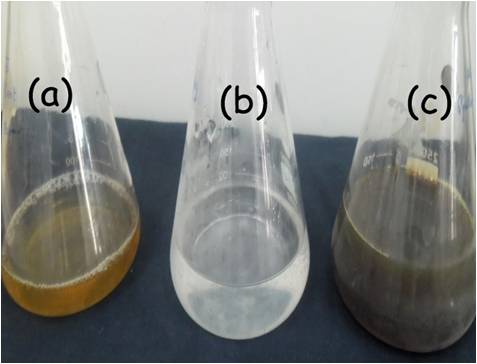Abstract
Silver nanoparticles were synthesized using leaves extract of Eugenia jambolana. Therefore, the present study is evaluate the phytochemical constituents of silver nanoparticles plant extract of Eugenia jambolana using FTIR. For synthesis of silver nanoparticles using leaf extracts of Eugenia jambolona, plant extract or filtrate was prepared by grinding the leaves and allowed to boil using water and finally filter the content with Whatman no.1 filter paper. This filtrate was then added to silver nitrate solution for silver nanoparticles formation which was characterized by UV-Vis spectroscopy. The silver nanoparticle extract that formed was then analysed for various phytochemical test and the functional groups present in the extract were identified by fourier transform Infrared Spectroscopy. As a result, the reduction of silver ions to form silver nanoparticles occurred within an hour of reaction at the absorption spectrum of 300–540 nm. The silver nanoparticles extract were found to contain secondary metabolites like alkaloids, flavonoids, phenolic compounds, saponins and sugars. The spectrum recorded between 350 cm-1 to 4000 cm-1 which showed the presence of various functional groups of phytochemicals. Plant extract used for the synthesis of silver nanoparticles was proved to be less toxic and also need less purification as compared to chemical methods. The use of silver nanoparticles in drug delivery systems becomes the milestones in the field of medicine.
Full text article
Generated from XML file
Authors
Gomathi S, Jannathul firdous, Bharathi V, Shanmugapriya A, Sugunabai J, Karpagam T, Geetha S, Sathia Nachiyar S, & Anusuya. (2023). Phytochemical screening of silver nanoparticles extract of Eugenia jambolana using Fourier infrared spectroscopy. International Journal of Research in Pharmaceutical Sciences, 8(3), 383–387. Retrieved from https://ijrps.com/home/article/view/4590
Copyright (c) 2017 International Journal of Research in Pharmaceutical Sciences

This work is licensed under a Creative Commons Attribution-NonCommercial-NoDerivatives 4.0 International License.

